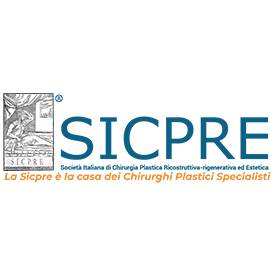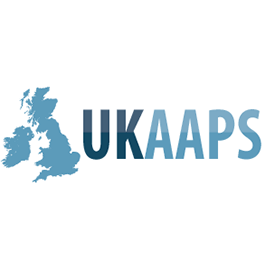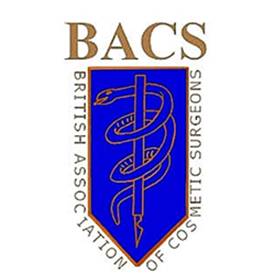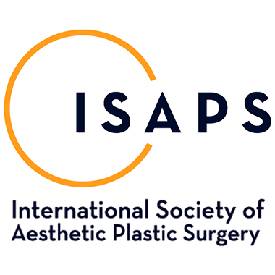 Alarplasty, also referred to as alar base reduction, is a surgical intervention designed to modify the configuration and breadth of the nostrils. Individuals from specific ethnic backgrounds often opt for this procedure to attain a more harmonious and aesthetically pleasing nose that complements their other facial features. Alarplasty, or nostril reduction, can be conducted as a standalone surgery or as a complementary component of a rhinoplasty.
Alarplasty, also referred to as alar base reduction, is a surgical intervention designed to modify the configuration and breadth of the nostrils. Individuals from specific ethnic backgrounds often opt for this procedure to attain a more harmonious and aesthetically pleasing nose that complements their other facial features. Alarplasty, or nostril reduction, can be conducted as a standalone surgery or as a complementary component of a rhinoplasty.
The nose holds a central position in our facial appearance, exerting significant influence over our overall look. While opinions on the ideal nasal aesthetics may vary, many would concur that an aesthetically pleasing nose typically features a straight profile, a petite rounded tip, and nostrils that harmonize with the overall nasal size.
Numerous individuals may not naturally possess these coveted attributes, including those with excessively wide or narrow nostrils or asymmetrical appearances. Alarplasty presents an ideal solution for enhancing symmetry and sculpting the nostril’s contours. This procedure is often combined with a tip plasty or a mini nose job to further refine the nasal tip.
Take a look at our Nose Job Before and after pictures.
Interested to know more about what Dr. Frati can do for you?
Alarplasty with Dr. Frati
If you wish to explore the comprehensive selection of rhinoplasty services provided by the esteemed Dr. Frati or have any other alarplasty related questions, please don’t hesitate to get in touch with our friendly team. You have the option to fill out a contact form, send an email to info@dr-frati.com, or utilise the phone numbers listed below, depending on your preferred clinic location.
To inquire about our Rhinoplasty in London, feel free to dial 020 3633 2619.
For queries related to our Rhinoplasty in Manchester, kindly call 0161 327 2139.
What’s the Difference Between Alarplasty and Rhinoplasty?
Alarplasty and rhinoplasty are both surgical procedures that focus on altering the appearance of the nose, but they target different aspects of nasal aesthetics and have distinct purposes:
-
Alarplasty:
– Objective: Alarplasty, also known as alar base reduction, is primarily aimed at modifying the size and shape of the nostrils, specifically addressing the width and appearance of the nostril base.
– Procedure: During alarplasty, small incisions are made at the base of the nostrils, and a wedge of soft tissue is removed to reduce the width of the nostrils. The incisions are typically well-hidden within the natural creases of the nose.
– Purpose: Alarplasty is often chosen by individuals who are generally satisfied with the overall appearance of their nose but wish to improve nostril symmetry or reduce nostril width.
-
Rhinoplasty:
– Objective: Rhinoplasty, commonly referred to as a “nose job,” is a broader surgical procedure that can involve reshaping the entire nose. It can address various concerns, including the size, shape, symmetry, and proportion of the entire nose, not just the nostrils.
– Procedure: Rhinoplasty may involve altering the nasal bridge, nasal tip, nostrils, and other nasal structures. The surgeon can use techniques like bone and cartilage manipulation, grafting, and reshaping to achieve the desired results.
– Purpose: Rhinoplasty is chosen by individuals who seek comprehensive changes to the appearance of their nose, addressing various aesthetic and functional concerns, such as a hump on the bridge, a drooping tip, or breathing difficulties due to a deviated septum.
In summary, the primary difference lies in the scope and objective of the procedures. Alarplasty is a more focused surgery that specifically targets the nostrils, whereas rhinoplasty is a broader procedure that can address a wide range of nasal issues, including those related to the nasal bridge, tip, and overall nasal shape. The choice between these procedures depends on the specific goals and concerns of the individual seeking nasal enhancement or correction.
Do I need Alarplasty or Traditional Rhinoplasty?
Determining whether you need alarplasty or rhinoplasty depends on your specific aesthetic goals and the aspects of your nose that you wish to address. Here are some considerations to help you decide which procedure may be more suitable for your needs:
Alarplasty may be appropriate if:
- Nostril Width: You are primarily concerned about the width or size of your nostrils and wish to achieve more balanced or symmetrical nostrils
2. Overall Nose Appearance: You are generally satisfied with the overall appearance of your nose, except for the nostrils.
- Minimal Changes: You desire relatively minor changes to your nose’s appearance and do not want a comprehensive alteration of the nasal structure.
- Quick Recovery: You prefer a shorter recovery period and a less invasive procedure.
Rhinoplasty may be appropriate if:
- Multiple Concerns: You have a range of aesthetic concerns about your nose, including the nasal bridge, tip, and overall shape, in addition to any issues related to the nostrils.
- Breathing Problems: You experience breathing difficulties due to a deviated septum or other structural issues within the nose, which can be addressed during rhinoplasty.
- Comprehensive Changes: You desire significant changes to the size, shape, or proportion of your entire nose, beyond just the nostrils.
- Full Evaluation: You are open to a more comprehensive evaluation and surgery, which can address a broader range of nasal aesthetic and functional concerns.
- **Longer Recovery**: You are willing to undergo a more extensive procedure with a somewhat longer recovery period to achieve more comprehensive results.
It’s essential to consult with a board-certified plastic surgeon or an otolaryngologist (ear, nose, and throat specialist) who specializes in nasal surgery. During your consultation, you can discuss your goals, concerns, and expectations with the surgeon. They will assess your nasal anatomy and recommend the most appropriate procedure based on your individual needs and desires. Ultimately, the choice between alarplasty and rhinoplasty should align with your specific goals for nasal enhancement or correction.


Rhinoplasty Step by Step Guide
For a basic guide to Alarplasty step by step, then follow this guide below. This is a general description and each procedure individual to your needs.
Anaesthesia: Alarplasty is mostly conducted under general anaesthesia.
Incision: The surgeon will make small incisions at the creases where the nostrils meet the cheeks.
Reshaping: Excess tissue is removed, and the nostrils are reshaped to achieve the desired appearance.
Suture Closure: The incisions are closed with sutures, which may be absorbable or non-absorbable.
Placement of Splint: A splint can be fixed to the exterior of the nose for preservation of the new shape and to safeguard it during healing.
Recovery: After the procedure, patients will require a recovery period for several weeks. Swelling and bruising will regress, and the results will become apparent after a few months.

Dr Frati Cosmetic Surgery was established by internationally renowned surgeon to the stars Dr Riccardo Frati. Dr. Frati has featured on ITV’s This Morning, GMTV, featured in The Times, The Daily Mail, The Independent, The Daily Star, The Sun, FHM and 10 Years Younger; with countless mentions in celebrity magazines, online magazines and makeover reveals.
Am I Suitable for Alarplasty?
Alarplasty is not intended to bring about dramatic changes in the overall appearance of your nose; rather, its aim is to enhance specific aspects of it. Many individuals may not readily discern that you’ve undergone surgical alarplasty to modify the size of your nostrils.
Patients often contemplate alarplasty surgery as a means to refine the size and contour of their nostrils, even when they are content with the general look of their noses. Surgical intervention may also be sought to address nostrils that appear excessively narrow or wide in comparison to other facial features. Some individuals may exhibit nostril asymmetry, with one side noticeably larger than the other. When they smile, they may observe their nostrils widening due to flaring. To be an ideal candidate for this procedure, individuals should be in good overall health and preferably non-smokers. Dissatisfaction with nostril aesthetics is the most prevalent motive for seeking alarplasty in London.
It’s important to note that this surgery is suitable only for individuals aged 18 and above, as the nose continues to undergo active growth and development prior to this age. If the appearance of your nostrils impacts your self-esteem and social confidence, we encourage you to reach out to us to schedule a thorough consultation with an experienced nose reshaping surgeon.
How Much does Alarplasty Cost?
The cost of alarplasty hinges on the degree of surgical correction needed and whether it is performed alongside a rhinoplasty. Following your consultation with the surgeon, your assigned patient coordinator will provide you with a precise quote, encompassing the fees of your surgeon, anesthetist, and facility. Additionally, the cost of postoperative assessments is encompassed within the overall alarplasty expense.
Book your FREE Consultation today!
Why choose a Specialist Surgeon for my Alarplasty?
Selecting a specialist surgeon like Dr. Frati for your alarplasty, which is a procedure focused on reshaping the nostrils or ala of the nose, offers several compelling reasons:
- Expertise and Experience: Dr. Frati’s specialization in facial plastic and reconstructive surgery means he has extensive experience and expertise in performing alarplasty and other nasal procedures. He has honed his skills and knowledge to achieve excellent results in this specific area.
- Customised Approach: Specialist surgeons, like Dr. Frati, have the ability to tailor alarplasty procedures to each patient’s unique goals and facial features. They can work closely with you to achieve a personalized and natural-looking outcome.
- Aesthetic Sensitivity: Dr. Frati possesses a keen aesthetic sense, a critical component of achieving the most aesthetically pleasing and balanced results in alarplasty.
- Reduced Risk of Complications: Specialist surgeons generally have lower complication rates because they are highly skilled and knowledgeable in performing alarplasty procedures.
- Consistent Results: Specialist surgeons often have a portfolio of consistent and successful results in alarplasty. They can provide you with before-and-after photos of previous patients who have undergone similar procedures.
- Ethical and Patient-Centred Care: Dr. Frati and other specialist surgeons prioritize ethical principles and patient-centred care. They are dedicated to providing you with the best possible outcome while ensuring your satisfaction and well-being.
- Minimization of Surgical Risks: With their experience and precise technique, specialist surgeons can minimize the risks associated with alarplasty, which is especially important when aiming for subtle and precise changes.
- Personalized Recommendations: Dr. Frati can provide personalized recommendations and help you understand what can be realistically achieved through alarplasty. He can assess your individual needs and tailor a treatment plan accordingly.
- Reputation and Trust: Surgeons like Dr. Frati typically have a strong reputation and trust within the field of facial plastic and reconstructive surgery. You can research his credentials, reviews, and testimonials to gain confidence in your choice.
When considering alarplasty, it’s essential to consult with surgeons who specialize in this specific procedure. Dr. Frati and other experienced specialist surgeons can assess your unique goals and concerns, provide personalized recommendations, and ensure you are well-informed about the procedure and potential outcomes
Your Alarplasty Consultation
Dr. Frati dedicates significant time to gaining a thorough understanding of your objectives for the procedure. Together, you and Dr. Frati will engage in a collaborative effort to establish the ideal nasal aesthetics that seamlessly complement your overall facial harmony. To facilitate this process, advanced 3D imaging techniques may be employed. Additionally, Dr. Frati will perform a comprehensive evaluation of your medical history, prior surgeries, overall health, allergies, and your current medication regimen, where relevant.
Rhinoplasty related questions which Dr Frati may ask you
Do you have any medical conditions like diabetes or hypertension?
Are you in good overall health without chronic medical conditions?
Are you currently taking any medications, and do you have any known allergies?
Have you undergone any prior surgeries, and were there any complications?
What are your desired outcomes for the rhinoplasty procedure?
Do you engage in smoking or alcohol consumption, and if so, to what extent?
Leveraging his extensive experience, Dr. Frati will suggest the most suitable procedure or a combination of procedures to attain your envisioned results. He will also provide a comprehensive explanation of potential risks and complications. If you wish, you have the choice to request a compilation of before-and-after rhinoplasty images, offering an initial glimpse into the possibilities of this surgical journey. It’s crucial to consider these images as informative references, as they do not guarantee an exact replication of any specific surgical outcome.
Rhinoplasty related you may want to ask Dr. Frati
How can I determine if a rhinoplasty is a suitable option for me?
Which technique is preferable: the open or closed approach?
If I’m not a candidate for a surgical procedure, should I consider a non-surgical rhinoplasty?
Is there a significant amount of post-procedure pain to anticipate?
What level of scarring is typical after the procedure?
Could you describe the recovery process and offer guidance for achieving optimal results during the healing period?
Am I maintaining realistic expectations regarding the desired outcomes?
Given my specific concerns, how many similar procedures have you performed in the past?
May I review before-and-after rhinoplasty images that are similar to my case?
What should I do if the results fall short of my expectations?
In about 25% of consultations, Dr. Frati may not recommend a rhinoplasty procedure. This underscores the ethical principles and professionalism upheld by all surgeons at Dr. Frati Cosmetic Surgery. Our primary dedication is to healthcare, and our clinical judgments are entirely free from any commercial interests.
The primary purpose of the consultation is to empower every patient with the knowledge and insight necessary to make informed and considerate decisions regarding the potential for a rhinoplasty procedure. Dr. Frati’s role is to facilitate this decision-making process, transforming the consultation into a collaborative interaction between two experts: yourself and Dr. Frati.
Alarplasty and Rhinoplasty FAQs
How much is Rhinoplasty?
Depending on many factors such as open or closed rhinoplasty's and also the bespoke requirements of each patient, you can expect rhinoplasty costs to start at £8,000 for closed and £10,300 for open rhinoplasty.
Is Rhinoplasty Surgery risky?
Every surgery is risky, period. There is always a risk of a reaction to anaesthesia for example, or internal bleeding, even infection of the operated area - unfortunately this is the nature of surgery. However, Dr. Frati is one of the best qualified surgeons in the UK and with this comes the mineralisation of risk, something to really take into account when choosing your surgeon.
How long does it take to recover from Rhinoplasty?
Whilst we would recommend to take around 2 weeks off work for recovery, it may take up to 6 months for swelling to completely disappear.
How long does Rhinoplasty surgery take?
Normally, Rhinoplasty surgery takes around 2-3 hours to complete
What's the difference between Male and Female Rhinoplasty?
Rhinoplasty is a widely performed cosmetic surgery procedure for both women and men. Notably, in the UK, it stands as the most frequently sought-after cosmetic surgery among men.
This procedure incorporates recognised surgical techniques suitable for both men and women, although gender differences in nasal structure yield distinct treatment goals. These structural distinctions often lead to different objectives for each gender.
Patients opt for rhinoplasty for various reasons, including addressing functional issues like breathing difficulties, enhancing the nose's aesthetics in harmony with their facial features, boosting self-confidence, and rectifying facial asymmetry. Common nasal irregularities include dorsal humps, bulbous or boxy tips, septal deviations, droopy nasal tips, narrow or wide noses, and noses deviated due to injury. The rhinoplasty surgeon's primary role is to identify the distinguishing features between male and female noses and devise surgical strategies to correct these abnormalities.
In men, rhinoplasty frequently involves achieving a straighter angle, enhancing definition, and reducing bulbous features. This results in a more pronounced appearance that complements the overall facial aesthetics. Many men also seek rhinoplasty to correct nose deviations from past injuries or to smooth out localised irregularities.
Conversely, women often opt for more subtle, less conspicuous changes to maintain facial balance. A commonly requested procedure is to reduce the appearance of a droopy nasal tip, often associated with a dorsal hump. Our surgeons, for both men and women, are skilled in addressing individual nasal concerns that hold personal significance. Typically, men seek a more chiseled or defined nose without excessive narrowing that could create a pinched nasal tip. The art of rhinoplasty surgery lies in tailoring each procedure to the patient's unique anatomy to help them achieve their objectives.
In many instances, there are marked differences in nasal structure between men and women. Women often have shorter noses and thinner skin, while many men possess thicker, more sebaceous skin. This thicker skin can lead to a larger, bulbous nasal tip, a feature more common in men and sometimes associated with a condition called rhinophyma.
The global COVID-19 pandemic has resulted in a surge of video conferencing, making many men more self-conscious about their appearance during these virtual interactions. Rhinoplasty distinguishes itself from other cosmetic surgeries by not only enhancing aesthetics but also improving the nose's functionality to restore overall facial balance. Patients, particularly men, who undergo rhinoplasty often report heightened self-confidence, leading to increased comfort in their appearance during video calls.
Male nose job surgery can be combined with other facial procedures, with the most prevalent combination being chin augmentation using an implant to achieve a more defined and stronger chin profile in addition to rhinoplasty.
As one of the UK's most reputable private rhinoplasty units, Dr. Frati is proficient in a range of rhinoplasty techniques, including open rhinoplasty, closed rhinoplasty, septo-rhinoplasty, rhino tip surgery, ultrasonic rhinoplasty, and revision rhinoplasty.
How do I prepare for Rhinoplasty?
Preparation for rhinoplasty, involves several crucial measures to facilitate a smooth surgery and a comfortable, speedy recovery. Here are key steps that patients should take in readiness for rhinoplasty:
- Consultation with a Qualified Plastic Surgeon: It's essential to consult with a seasoned plastic surgeon experienced in rhinoplasty, such as Dr. Frati. The surgeon will assess the patient's unique case, discuss their surgery objectives, and provide a comprehensive overview of the procedure, including potential risks and complications.
- Medical Evaluation: Patients must undergo a medical evaluation to ensure they are in good health and eligible for safe surgery. Dr. Frati will review your medical history, conduct a physical examination, and order any necessary lab tests.
- Smoking Cessation and Medication Review: Smoking can impede the healing process, so patients should quit smoking at least six weeks before the surgery. Additionally, certain medications, such as aspirin and non-steroidal anti-inflammatory drugs (NSAIDs), should be avoided, as they can elevate the risk of bleeding.
- Arrange Post-Operative Care: You should make arrangements for post-operative care, including transportation home after the surgery and having someone to stay with them for the initial few days to assist with tasks like bathing and dressing.
- Adherence to Pre-Operative Instructions: Dr. Frati will furnish the patient with detailed pre-operative instructions, covering dietary and beverage guidelines, pre-surgery preparation, and post-surgery wound care. Adhering closely to these instructions is crucial for a smooth recovery.
- Understanding the Recovery Process: The recovery following rhinoplasty can span several weeks. You should familiarise yourself with what to expect during this phase and plan accordingly. Swelling and bruising are normal post-surgery effects, and activities such as sports, heavy lifting, and exercise should be avoided for at least two weeks.
- Realistic Expectations: It is paramount for patients to harbour realistic expectations regarding the surgery's outcomes. It is important to comprehend that the final results will only become visible once the swelling has entirely subsided.
By following these steps, you can effectively prepare for rhinoplasty, ensuring a smooth surgical experience with Dr. Frati and a comfortable, expedited recovery.
What scars will I have after Rhinoplasty?
The type and location of scars resulting from a nose job (rhinoplasty) are contingent on the specific technique employed by Dr. Frati. In an "open" rhinoplasty, an incision is made across the columella (the skin between the nostrils), enabling the surgeon to lift the skin from the underlying nasal structures. This grants access to the underlying cartilage and bone for necessary adjustments. In a "closed" rhinoplasty, all incisions are internal, minimising visible scarring. Nevertheless, the chosen technique will also consider individual cases, patient requirements, and Dr. Frati's preference.
Following the surgery, incisions are closed with sutures, and the healing process spans several weeks to months. Once healing is complete, most scars are concealed within the natural creases of the nose, making them inconspicuous. Nonetheless, it's important to bear in mind that the final results of the surgery may not be immediately apparent. It may take several months for swelling to subside and for the definitive shape of the nose to emerge.
It's essential to acknowledge that scarring is an inherent component of any surgical procedure. While all possible efforts are made to minimise scarring, there is no absolute guarantee that scars will remain entirely imperceptible. Therefore, it is crucial to discuss potential scarring with Dr. Frati before opting for the surgery.
Other Types of Rhinoplasty
Open Rhinoplasty
Open rhinoplasty is a surgical technique used for nasal reshaping (rhinoplasty) in which the surgeon makes an incision on the external skin of the nose, usually along the columella, which is the narrow strip of tissue that separates the nostrils. This approach is also known as the "external" or "open structure" rhinoplasty technique. It is distinguished from closed rhinoplasty, where all incisions are made inside the nostrils, resulting in no external scars.
A quick summary of how Open Rhinoplasty Works
Incision: In an open rhinoplasty, the surgeon creates a small incision on the columella, the fleshy strip of skin and tissue that separates the nostrils. This external incision allows the surgeon better visibility and access to the internal structures of the nose.
Visualisation: By lifting the nasal skin and tissue, the surgeon gains a direct and clear view of the nasal cartilage and bone. This enhanced visibility is particularly useful for complex or detailed nasal surgeries.
Surgical Precision: The open rhinoplasty approach offers greater control and precision in reshaping the nasal structures, making it well-suited for cases where extensive changes or reconstructions are required.
Suture Closure: After the necessary alterations have been made to the nasal framework, the surgeon meticulously closes the external incision with fine sutures. Over time, the scar on the columella usually becomes quite inconspicuous and often fades significantly.
Open rhinoplasty is typically chosen in the following situations:
- Complex or revision rhinoplasty: When significant structural changes are needed or when the patient has undergone prior nasal surgery.
- Cases requiring precise control: Surgeons may prefer the open approach for intricate refinements, such as tip work or graft placement.
- Improved visibility: Surgeons may opt for open rhinoplasty to achieve a better view of the nasal anatomy, making it easier to address specific concerns.
It's essential to consult with a board-certified plastic surgeon such as Dr. Frati to determine the most appropriate rhinoplasty technique for your unique goals and needs. Dr. Frati can consider your nasal anatomy, aesthetic objectives, and any prior surgeries to recommend the best approach for you.
Closed Rhinoplasty
Closed rhinoplasty, also known as endonasal rhinoplasty or scarless rhinoplasty, is a surgical technique used for nasal reshaping (rhinoplasty) in which all the incisions are made inside the nostrils. Unlike open rhinoplasty, which involves an external incision on the columella (the strip of tissue that separates the nostrils), closed rhinoplasty is performed entirely through the nostrils. This approach is known for leaving no external scars.
Here's an overview of closed rhinoplasty:
Internal Incisions: In closed rhinoplasty, the surgeon makes incisions on the inside of the nose, typically within the nostrils. These incisions provide access to the nasal structures that need to be modified or reshaped.
Limited Visibility: Since the surgeon works through small internal incisions, the visibility of the nasal anatomy is somewhat limited compared to open rhinoplasty. However, skilled surgeons are experienced in working within these constraints.
Tissue Manipulation: The surgeon can access and manipulate the nasal bones, cartilage, and soft tissues to achieve the desired changes to the nose's shape, size, and structure.
Suture Closure: After making the necessary modifications, the surgeon closes the internal incisions with sutures. Since there are no external incisions, there are no visible external scars.
Closed rhinoplasty is commonly chosen in the following situations:
- Minor to moderate nasal reshaping: When the desired changes to the nose are relatively straightforward and don't require extensive exposure or structural alterations.
- Patients concerned about visible scarring: Closed rhinoplasty is often recommended for individuals who want to minimize the risk of external scarring, as there are no visible scars on the outside of the nose.
- Faster recovery: Some patients may experience a quicker recovery with closed rhinoplasty due to the absence of external incisions.
The choice between closed and open rhinoplasty depends on various factors, including the complexity of the procedure, the surgeon's preference and expertise, and the patient's specific goals and anatomy. A consultation with Dr. Frati is essential to determine the most suitable rhinoplasty approach for an individual's needs.
Tip Rhinoplasty
Tip rhinoplasty, also known as nasal tip surgery, is a specific type of rhinoplasty procedure that focuses primarily on altering and refining the shape, size, and appearance of the nasal tip. Unlike a full rhinoplasty, which can involve changes to the entire nose, tip rhinoplasty targets the lower portion of the nose, specifically the nasal tip and the surrounding structures.
Some common goals of tip rhinoplasty include:
Nasal Tip Refinement: Tip rhinoplasty is often performed to refine and reshape a bulbous or wide nasal tip. Surgeons can sculpt the tip to make it more defined and proportionate to the rest of the nose and face.
Nasal Tip Projection: Some individuals have a nasal tip that is too flat or lacks projection. Tip rhinoplasty can be used to increase the projection of the tip, giving it a more prominent appearance.
Tip Rotation: The angle at which the nasal tip points can be adjusted during tip rhinoplasty. Surgeons can rotate the tip upward (upward rotation) or downward (downward rotation) to achieve the desired aesthetic.
Nostril Size and Shape: In some cases, tip rhinoplasty may also involve adjustments to the size and shape of the nostrils, particularly if they are asymmetrical or flared.
Correction of Minor Irregularities: Tip rhinoplasty can address minor irregularities or asymmetries in the nasal tip, such as cartilage asymmetry or unevenness.
It's important to note that tip rhinoplasty is a more focused and less invasive procedure compared to a full rhinoplasty. It is often chosen by individuals who are generally satisfied with the appearance of the upper part of their nose but seek specific improvements in the tip region. As with any cosmetic surgery, it's crucial to consult with a board-certified plastic surgeon such as Dr. Frati for your specific needs.
Alarplasty
Alarplasty, also known as alar base reduction or nostril reduction surgery, is a cosmetic surgical procedure that focuses on altering the size and shape of the nostrils. This procedure is often performed to address concerns related to the width or flaring of the nostrils, helping to achieve better facial harmony and balance.
Here's an overview of alarplasty:
Nostril Reduction: Alarplasty specifically targets the alar base, which is the area where the nostrils meet the cheeks. It involves the surgical modification of the nostrils to reduce their width or flare.
Incisions: Typically, small incisions are made at the junction between the nostrils and the cheeks, near the outer edges of the nostrils. The precise location and size of these incisions can vary depending on the individual's anatomy and the desired outcome.
Tissue Removal: The surgeon may remove a wedge-shaped piece of tissue from the base of the nostrils to narrow them. This tissue removal is carefully planned to ensure that the nostrils maintain a natural and symmetrical appearance.
Suture Closure: After the necessary tissue adjustments are made, the surgeon closes the incisions with sutures. These sutures are usually absorbable and do not need to be removed.
Alarplasty is typically performed for the following reasons:
- Wide or Flaring Nostrils: Individuals with wide or flaring nostrils may seek alarplasty to achieve a more proportionate and balanced appearance.
- Facial Harmony: Alarplasty can help enhance facial harmony by reducing the prominence of the nostrils, making them more in line with other facial features.
- Ethnic Rhinoplasty: Alarplasty is sometimes part of ethnic rhinoplasty procedures, as people from different ethnic backgrounds may have specific aesthetic concerns related to the shape and width of their nostrils.
Alarplasty is considered a relatively straightforward and minimally invasive procedure when compared to more extensive rhinoplasty surgeries. However, it is still a surgical procedure that should be performed by a board-certified plastic surgeon such as Dr. Frati. Dr. Frati will work closely with the patient to determine the desired outcome and create a treatment plan tailored to their specific goals.
Septoplasty
Septoplasty is a surgical procedure performed to correct a deviated septum, a condition in which the nasal septum (the thin wall of cartilage and bone that separates the two nasal passages) is crooked or displaced, causing obstruction or blockage in one or both nostrils. This obstruction can lead to various nasal and breathing problems.
Here's an overview of septoplasty:
Diagnosis: Before septoplasty, a patient typically undergoes a thorough evaluation by an ear, nose, and throat (ENT) specialist or a rhinologist. This evaluation may include a physical examination, nasal endoscopy, and sometimes imaging studies like a CT scan to assess the extent and location of the septal deviation.
Surgical Procedure: Septoplasty is performed under local or general anesthesia, depending on the patient's and surgeon's preferences. During the procedure, the surgeon makes an incision inside the nostril to access the deviated septum.
Straightening the Septum: The surgeon carefully lifts the mucosal lining covering the septum and then reshapes or repositions the deviated septum, often by trimming, removing, or repositioning the cartilage and bone. The goal is to create a straighter, more symmetrical nasal septum that allows for improved airflow through the nasal passages.
Closing the Incision: After the necessary adjustments are made to the septum, the surgeon closes the incision with dissolvable sutures or other closure techniques. No external incisions or visible scars are typically associated with septoplasty since all the work is done inside the nostrils.
Septoplasty is primarily performed to address functional issues related to a deviated septum, including:
- Nasal obstruction: Correcting a deviated septum can alleviate difficulty breathing through the nose, reduce nasal congestion, and improve airflow.
- Snoring and Sleep Apnea: In some cases, septoplasty can help reduce snoring and improve sleep apnea symptoms by opening the airway.
- Chronic Sinusitis: A deviated septum can contribute to chronic sinusitis. Septoplasty may be part of the treatment plan for individuals with recurrent sinus infections.
It's important to note that septoplasty is a medical procedure aimed at improving nasal function, and its primary goal is not cosmetic. However, some individuals may choose to combine septoplasty with cosmetic rhinoplasty to address both functional and aesthetic concerns simultaneously. Septoplasty is considered a relatively safe and effective procedure when performed by a skilled and experienced ENT surgeon or rhinologist. Recovery times can vary, but most patients can return to their normal activities within a week or two following surgery.
Septorhinoplasty
Septorhinoplasty is a surgical procedure that combines two distinct nasal surgeries: septoplasty and rhinoplasty. This combined procedure is performed to address both functional and cosmetic issues of the nose. Here's a breakdown of what each component entails:
Septoplasty: This part of the procedure focuses on correcting a deviated septum, which is the thin wall of cartilage and bone that separates the two nasal passages. A deviated septum can lead to breathing difficulties, nasal congestion, and other functional problems. During septoplasty, the surgeon makes internal incisions inside the nostrils, repositions or removes the deviated portions of the septum, and straightens it to improve nasal airflow and function.
Rhinoplasty: Rhinoplasty, often referred to as a "nose job," is a cosmetic surgery that focuses on altering the size, shape, or appearance of the nose to enhance its aesthetics. This component of septorhinoplasty allows patients to address concerns related to the external appearance of the nose. It can involve reshaping the nasal tip, reducing or augmenting the nasal bridge, refining the nostrils, or addressing other cosmetic issues.
Septorhinoplasty is typically chosen by individuals who have both functional and aesthetic concerns about their nose. Common reasons for undergoing septorhinoplasty include:
- Correcting breathing problems caused by a deviated septum while simultaneously improving the appearance of the nose.
- Enhancing facial harmony by addressing cosmetic issues such as a hump on the bridge of the nose, a bulbous nasal tip, or asymmetry.
- Addressing trauma-related injuries to the nose that have resulted in both functional and cosmetic deformities.
- Combining septoplasty with rhinoplasty allows for a more comprehensive approach to nasal surgery, ensuring that both functional and aesthetic goals are achieved in a single procedure.
Septorhinoplasty is a complex surgical procedure that requires the expertise of a skilled and experienced plastic surgeon such as Dr. Frati. The specific techniques used and the surgical plan will vary depending on the individual's unique anatomy and goals. Recovery times and post-operative care will also depend on the extent of the surgery and the patient's overall health. Patients considering septorhinoplasty should have a thorough consultation with Dr. Frati to discuss their concerns, expectations, and the potential benefits and risks of the combined procedure.
Preservation Rhinoplasty
Preservation rhinoplasty, also known as preservation or preservationist rhinoplasty, is an approach to nasal surgery that emphasizes maintaining and preserving the natural structures of the nose as much as possible while making subtle, conservative changes to improve its appearance. This technique stands in contrast to traditional or "reductive" rhinoplasty, where significant cartilage and bone removal may be involved to achieve the desired cosmetic changes.
Key features of preservation rhinoplasty include:
Minimal Tissue Removal: Preservation rhinoplasty involves minimal removal of cartilage and bone from the nose. Surgeons aim to retain as much of the patient's natural nasal anatomy as possible.
Respect for Nasal Function: This approach prioritises preserving nasal function and maintaining proper airflow through the nasal passages. Functional aspects of the nose, such as the nasal septum and other supporting structures, are carefully preserved.
Natural Results: Preservation rhinoplasty focuses on achieving results that look natural and harmonious with the patient's facial features. The goal is to create subtle and proportionate changes rather than dramatic alterations.
Reduced Risk of Complications: Since the procedure is less invasive and involves less tissue manipulation, there may be a reduced risk of complications, such as structural issues or breathing problems, that can occur in more extensive rhinoplasty procedures.
Shorter Recovery Time: Patients undergoing preservation rhinoplasty may experience a shorter recovery period compared to traditional rhinoplasty, as there may be less swelling and bruising.
Preservation rhinoplasty can be an attractive option for individuals who are primarily seeking subtle cosmetic enhancements to their nose without drastically altering their natural appearance or risking functional issues. It may also be suitable for those with concerns about the long-term structural integrity of their nose.
It's important to note that preservation rhinoplasty is not suitable for every patient or every desired outcome. The appropriateness of this approach depends on the patient's specific nasal anatomy, goals, and the expertise of the surgeon. Patients interested in preservation rhinoplasty should consult withDr. Frati to determine the most suitable approach for their individual needs and expectations.
Ultrasonic Rhinoplasty
Ultrasonic rhinoplasty is an advanced surgical technique that utilizes ultrasonic instruments, specifically ultrasonic bone-cutting devices, to perform precise and controlled bone reshaping during a rhinoplasty procedure. This technique has gained popularity in the field of cosmetic and reconstructive rhinoplasty because it offers several advantages over traditional methods of bone manipulation.
Here's how ultrasonic rhinoplasty works and its key features:
Ultrasonic Instruments: Ultrasonic rhinoplasty employs specialised ultrasonic instruments that emit high-frequency sound waves. These waves are used to cut, sculpt, and shape bone and cartilage in a controlled and precise manner.
Precise Bone Sculpting: Traditional rhinoplasty techniques often involve the use of chisels or osteotomes to reshape the nasal bones. Ultrasonic instruments allow for more accurate and fine-tuned bone sculpting, reducing the risk of fractures, irregularities, and complications.
Minimised Trauma: Ultrasonic rhinoplasty is considered less traumatic to the surrounding tissues compared to traditional methods. This can result in reduced post-operative swelling and bruising, potentially leading to a faster recovery and less discomfort for the patient.
Customised Results: Surgeons can achieve highly customised and precise results with ultrasonic rhinoplasty. The technique allows for intricate adjustments to the nasal bones, including dorsal hump reduction, narrowing of the nasal bridge, and other bone-related modifications.
Versatility: Ultrasonic rhinoplasty can be used in various types of rhinoplasty procedures, including primary (first-time) rhinoplasty, revision rhinoplasty, and ethnic rhinoplasty, to address a wide range of aesthetic and functional concerns.
Enhanced Safety: The precision of ultrasonic instruments minimises the risk of accidental damage to adjacent structures, such as the nasal septum or soft tissues, further enhancing the safety of the procedure.
Shorter Recovery: Some patients may experience a shorter recovery time with ultrasonic rhinoplasty due to reduced trauma to the tissues and less post-operative swelling.
It's important to note that ultrasonic rhinoplasty is a specialised technique that requires the surgeon to have specific training and experience with ultrasonic devices. Not all rhinoplasty surgeons may offer this option, so patients interested in ultrasonic rhinoplasty should seek out a consultation with Dr. Frati.
As with any surgical procedure, it's essential for patients to have a thorough consultation with Dr. Frati to discuss their goals, expectations, and the most suitable approach for their individual needs.
Ethnic Rhinoplasty
Ethnic rhinoplasty, also known as cultural or ethnic nose surgery, is a specialized branch of rhinoplasty that focuses on reshaping and enhancing the nose while taking into consideration the unique characteristics and aesthetic preferences of individuals from various ethnic backgrounds. The goal of ethnic rhinoplasty is to achieve a nose that is both harmonious with the individual's facial features and culturally appropriate.
Key features of ethnic rhinoplasty include:
Cultural Considerations: Ethnic rhinoplasty acknowledges that different ethnic groups have distinct nasal and facial characteristics. Surgeons work to preserve these ethnic features while addressing specific concerns or requests from the patient.
Customisation: Each ethnic group may have its own ideal of beauty and specific nasal traits that are considered desirable. Ethnic rhinoplasty aims to customise the procedure to achieve a result that aligns with the patient's cultural background and personal preferences.
Respect for Natural Beauty: Ethnic rhinoplasty does not seek to westernise or homogenise the appearance of the nose. Instead, it respects and enhances the patient's natural beauty while addressing any functional or aesthetic concerns.
Balancing Proportions: Surgeons performing ethnic rhinoplasty focus on achieving balance and harmony between the nose and other facial features. This often involves modifying the nasal bridge, tip, or nostrils to create a more proportional appearance.
Functional Improvements: In some cases, ethnic rhinoplasty may also involve addressing functional issues, such as a deviated septum or breathing difficulties, to improve the overall nasal function.
- Ethnic rhinoplasty is commonly sought by individuals who wish to refine or enhance the appearance of their nose while maintaining their cultural identity and unique features. Some examples of ethnic rhinoplasty goals for specific groups may include:
- African American Rhinoplasty: Addressing concerns related to a wide nasal base, a broad or flat nasal bridge, or nostril shape and size.
- Asian Rhinoplasty: Enhancing the nasal bridge, tip projection, or addressing issues related to a less defined nasal tip.
- Hispanic/Latino Rhinoplasty: Balancing proportions of the nasal bridge and tip while preserving natural ethnic features.
- Middle Eastern Rhinoplasty: Addressing concerns about nasal hump reduction, tip refinement, or nostril shape.
It's essential for individuals considering ethnic rhinoplasty to consult with Dr. Frati who has experience working with patients from diverse cultural backgrounds. A thorough consultation will help ensure that the surgical plan aligns with the patient's cultural preferences and aesthetic goals.
Alarplasty Benefits
Alarplasty, also known as alar base reduction or alar wing reduction, is a surgical procedure that focuses on reducing the size and width of the nostrils or ala of the nose. The benefits of alarplasty include:
- Improved Facial Harmony: Alarplasty can help achieve better facial balance by reducing wide or flared nostrils that may appear disproportionate to the rest of the face.
- Enhanced Aesthetics: It can provide a more refined and aesthetically pleasing appearance to the nose by creating a narrower and more harmonious nasal base.
- Boosted Self-Esteem: Many individuals who undergo alarplasty report an increase in self-esteem and confidence as they are happier with the appearance of their nose.
- Preservation of Ethnic or Cultural Features: Alarplasty can be tailored to preserve the unique ethnic or cultural characteristics of the nose while making subtle refinements.
- Correction of Asymmetry: If one nostril is larger or differently shaped than the other, alarplasty can correct this asymmetry and create a more balanced appearance.
- Functional Improvement: In some cases, alarplasty can address functional issues, such as difficulties with breathing, especially if the wide nostrils are impacting nasal airflow.
- Minimally Invasive: Alarplasty is a relatively minimally invasive procedure, which means a shorter recovery time and less post-operative discomfort compared to more extensive rhinoplasty procedures.
- Permanent Results: Alarplasty typically provides permanent results, and the changes made to the nostrils tend to be long-lasting.
- Customised Outcome: Surgeons can customise alarplasty to match the specific goals and needs of each patient, resulting in highly personalized results.
- Quick Recovery: Patients often experience a faster and more comfortable recovery period, with less noticeable post-operative swelling and bruising compared to more extensive rhinoplasty procedures.
It’s important to consult with a board-certified plastic surgeon or a specialist in facial procedures to determine if alarplasty is the right option for you. They can evaluate your unique features, discuss your specific goals, and provide recommendations based on your individual needs.
Are there any Risks to Alarplasty?
Like any surgical procedure, alarplasty carries some potential risks and complications, although they are generally considered to be lower in comparison to more extensive rhinoplasty procedures. Some of the risks associated with alarplasty include:
- Asymmetry: While alarplasty aims to correct asymmetry, there is a risk of creating new asymmetries if the procedure is not performed correctly.
- Scarring: Alarplasty incisions are typically made at the creases where the nostrils meet the cheeks. While these scars are usually discreet, there is still a risk of visible scarring in some cases.
- Overcorrection or Undercorrection: Surgeons may sometimes overcorrect or undercorrect the width of the nostrils, leading to less than optimal results. Revision surgery may be necessary in such cases.
- Functional Issues: Alarplasty can potentially affect nasal airflow and cause breathing difficulties, especially if the procedure is not tailored to address any functional concerns.
- Delayed Healing: Some individuals may experience prolonged healing and swelling, which can affect the timeline for achieving the final results.
- Nasal Valve Collapse: In some cases, alarplasty can lead to nasal valve collapse, which may impede normal breathing. Surgeons typically take steps to avoid this complication.
- Infection and Bleeding: Although the risk is relatively low, there is still a possibility of infection or bleeding at the surgical site.
- Unsatisfactory Aesthetic Outcome: While alarplasty is designed to improve the appearance of the nostrils, there is a risk that the results may not meet your expectations. It’s crucial to have a thorough discussion with your surgeon to ensure you have realistic goals for the procedure.
- Permanent Changes: Alarplasty typically provides permanent results. While this is an advantage for most, it means that any undesirable changes made during the procedure cannot be easily reversed.
- Revision Surgery: If the initial alarplasty does not achieve the desired results, revision surgery may be necessary. However, revision procedures come with their own set of risks.
It’s essential to choose a qualified and experienced plastic surgeon who specializes in facial procedures and alarplasty to minimize the risks associated with the procedure. Your surgeon will conduct a thorough evaluation of your individual circumstances and discuss the potential risks and benefits during the pre-operative consultation. By following your surgeon’s recommendations and post-operative instructions, you can further reduce the risk of complications and enhance your overall experience.
Alarplasty Recovery
Recovery from alarplasty is typically less extensive and more comfortable compared to more invasive rhinoplasty procedures. However, the exact recovery experience can vary from person to person. Here is a general overview of what you can expect during the recovery process:
Immediate Post-Operative Period (Days 1-7):
- Swelling and Bruising: You can expect some swelling and bruising around the nose and possibly the eyes. This is most noticeable in the first few days after the surgery.
- Nasal Packing or Stents: Your surgeon may place nasal packing or stents inside the nostrils to support the newly reshaped nostrils. These are typically removed within a week.
- Pain and Discomfort: Some mild discomfort is common, but it is usually manageable with prescribed or over-the-counter pain medications.
- Suture Removal: If non-absorbable sutures are used, they will be removed within the first week following the surgery.
- Rest and Elevation: It’s advisable to rest with your head elevated to minimize swelling. Avoid bending over or straining activities during this initial period.
1-2 Weeks Post-Operative:
- Return to Daily Activities: Many patients can return to work or regular activities within a week after surgery, as long as they feel comfortable doing so.
- Stitch Removal: If non-absorbable sutures were used, these are typically removed within the first week or two.
- Swelling Reduction: Swelling will continue to subside gradually over the first couple of weeks.
2-4 Weeks Post-Operative:
- Reduced Swelling: Most of the visible swelling should have subsided by this time, but some minor residual swelling may persist.
- Exercise and Physical Activity: You can typically resume light exercise and physical activities, but avoid strenuous exercise until cleared by your surgeon.
Long-Term Recovery (Several Months):
- Final Results: It may take several months for the final results of alarplasty to become fully visible. The nose will continue to refine in shape and appearance during this time.
- Scar Healing: Any scars from incisions at the base of the nostrils should continue to fade and become less noticeable.
It’s important to follow your surgeon’s post-operative instructions carefully, which may include wearing a splint or bandage on your nose and avoiding activities that could risk injury. Attend all scheduled follow-up appointments to ensure proper healing and address any concerns.
Every patient’s recovery experience is unique, and the timeline may vary. It’s crucial to maintain open communication with your surgeon during the recovery process to ensure a successful and satisfying outcome.
